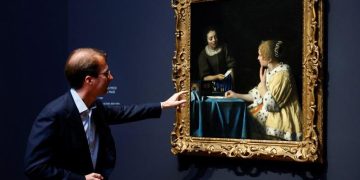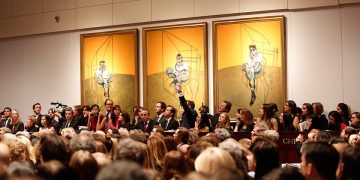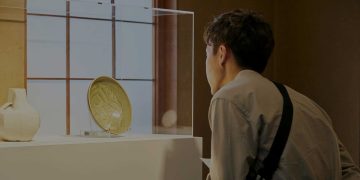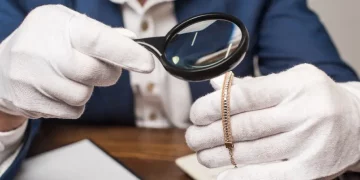Introduction
Private collection auctions often carry an air of mystery and exclusivity. Unlike institutional sales from well-known museums or foundations, private auctions tend to hold pieces that have been hidden from public view for decades—sometimes generations. These are not just auctions; they are treasure hunts. And for the discerning collector, investor, or scholar, they offer a rare opportunity to unearth what may be the next “museum-grade” discovery.
In the upcoming private collection auction set for later this month, whispers in the collector’s world suggest that one or more of the listed items may be far more significant than the initial estimates imply. Could a forgotten masterwork, an undocumented artifact, or an overlooked relic of historical importance be sitting quietly in the catalog—waiting to be recognized for its true worth?
Let’s take a closer look at why this particular auction has the potential to deliver a once-in-a-generation find—and which items insiders are watching most closely.
Why Private Collections Matter
Private collectors often acquire pieces based on passion, family inheritance, or personal discovery, not necessarily with the rigor of museum-grade provenance documentation. While this means there may be gaps in the historical record, it also opens the door for rediscovery. Some of the most celebrated finds of the past century—previously unknown works by Old Masters, rare manuscripts, and forgotten antiquities—were pulled from private estates, dusty attics, or obscure collections.
In this auction, the consignor is an elderly European collector whose family began acquiring pieces in the early 20th century. The collection spans Renaissance paintings, Asian antiquities, rare books, and decorative objects from various centuries. Many of these have not been publicly exhibited or academically examined since the 1950s.
1. A Mysterious Renaissance Portrait: Forgotten Master at Work?
Among the most buzzed-about pieces is a small oil-on-panel portrait attributed simply to the “School of Northern Italy, late 15th century.” At first glance, it appears to be a typical period piece—a modest, three-quarter profile of a noblewoman. But a closer inspection by a visiting art historian suggests something more intriguing: stylistic markers and underdrawing techniques consistent with known works by a follower—or possibly even a student—of Leonardo da Vinci.
The wood panel has been well-preserved, and initial infrared scans have revealed complex pentimenti (changes made by the original artist during the painting process), which suggests the work was more than a workshop copy. If confirmed, this attribution could catapult the painting into museum-level significance, potentially increasing its value from a modest six-figure estimate to several million dollars.
2. A Gilded Buddha: Lost Imperial Commission from the Ming Dynasty?
Another standout is a gilt-bronze seated Buddha, cataloged as 17th-century Chinese, with no specific attribution. However, eagle-eyed collectors have noted several unique features—particularly the facial expression, flame-like aureole, and base inscription—that match descriptions of imperial commissions from the reign of the Wanli Emperor (1573–1620).
If authenticated as such, this piece would not only represent a spiritual and artistic treasure but also a rare survivor from a turbulent period in China’s dynastic history. Museum curators are said to be quietly monitoring the auction, and if the Buddha does in fact bear a rare imperial mark beneath its base (still sealed), it could immediately draw institutional interest and potentially shift hands at many times its current estimate.
3. Illuminated Manuscript Fragment: A Page from the Lost Codex?
One of the quieter lots in the auction—a single illuminated manuscript page from the 13th century—has generated significant academic interest. While listed simply as “Book of Hours leaf, France,” scholars who’ve examined it believe the style and iconography are distinctively English, possibly from the lost Winchester Psalter, long thought to be incomplete.
The miniature’s coloration, layout, and gold detailing match no other known fragment. If it can be proven that this page belonged to a missing portion of a major medieval manuscript, its value and scholarly importance would be monumental. Such rediscoveries have previously led to acquisitions by institutions like the British Library or The Getty.

4. A Modernist Canvas: Early Work by a Giant in Disguise?
One lot listed innocuously as “Untitled abstract painting, mid-20th century, European school” may turn out to be a hidden gem from the early career of a major modernist. The use of brushwork, layering, and geometric form hints strongly at the early output of Zao Wou-Ki, the Chinese-French abstractionist whose works regularly sell for millions.
Zao’s earliest works, particularly before his full transition to abstract expressionism, are notoriously hard to trace. If forensic pigment analysis or archival research confirms authorship, this small painting—currently estimated at under $30,000—could be worth over $1 million.
5. The Forgotten Scientific Instrument: A Link to Galileo?
Perhaps the most overlooked piece in the auction is a brass and silver astronomical quadrant, dated circa 1600. While decorative in appearance, an inscription recently translated from Latin appears to reference a Florentine workshop known to have supplied instruments to Galileo Galilei himself.
Though no documentation ties this specific quadrant directly to Galileo, the possibility that it emerged from his scientific milieu gives it enormous historical value. Similar instruments have been acquired by the Science Museum in London and Museo Galileo in Florence. If verified, this item could be one of the most significant early scientific instruments to come to market in decades.
Why This Auction Could Make Headlines
What makes this auction particularly compelling is the confluence of anonymity and authenticity. These items haven’t been shopped around galleries or academics for decades. In fact, some have never even been photographed until now. This freshness, combined with several objects showing signs of deeper historical significance, creates the perfect conditions for a major discovery.
Auction houses rarely get opportunities like this, where original provenance remains intact, and items haven’t been over-handled or over-restored. That alone gives scholars, museums, and collectors a reason to pay attention. A single overlooked detail—like a hidden signature, inscription, or stylistic clue—can transform an object from curious to canonical.
Conclusion: A Discovery Waiting to Happen
Is there a museum-grade discovery waiting to be uncovered in this private collection auction? All signs point to yes. Whether it’s a rediscovered Renaissance portrait, a royal Buddha, a missing manuscript page, or an early work by a modern master, the catalog holds more than meets the eye.
For serious collectors and institutions alike, this auction is more than just a sale—it’s a moment of opportunity. With the right combination of expertise, intuition, and timing, someone may walk away with a piece of history—and the next great museum acquisition may just be hiding in plain sight.
Stay alert. Look closely. The next masterpiece might not come from a blue-chip gallery, but from a dusty frame, a faded page, or a quiet lot number in an old collector’s estate.

















































